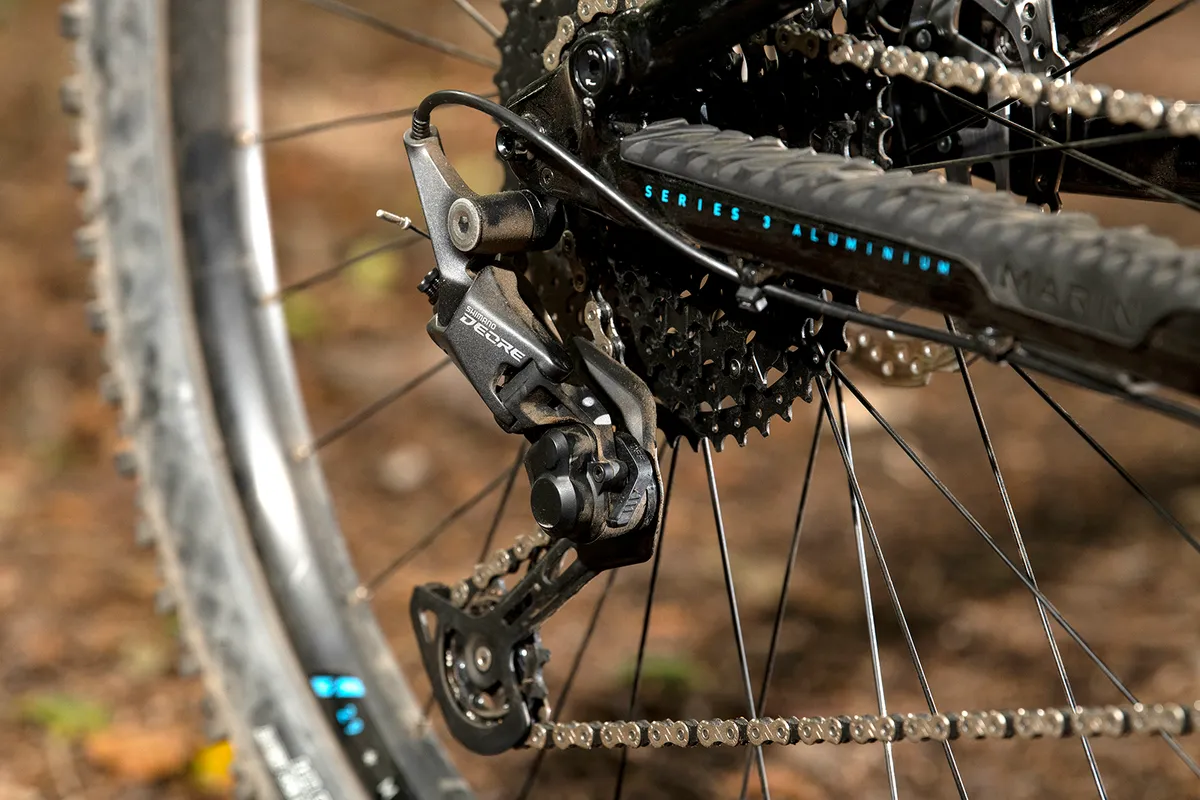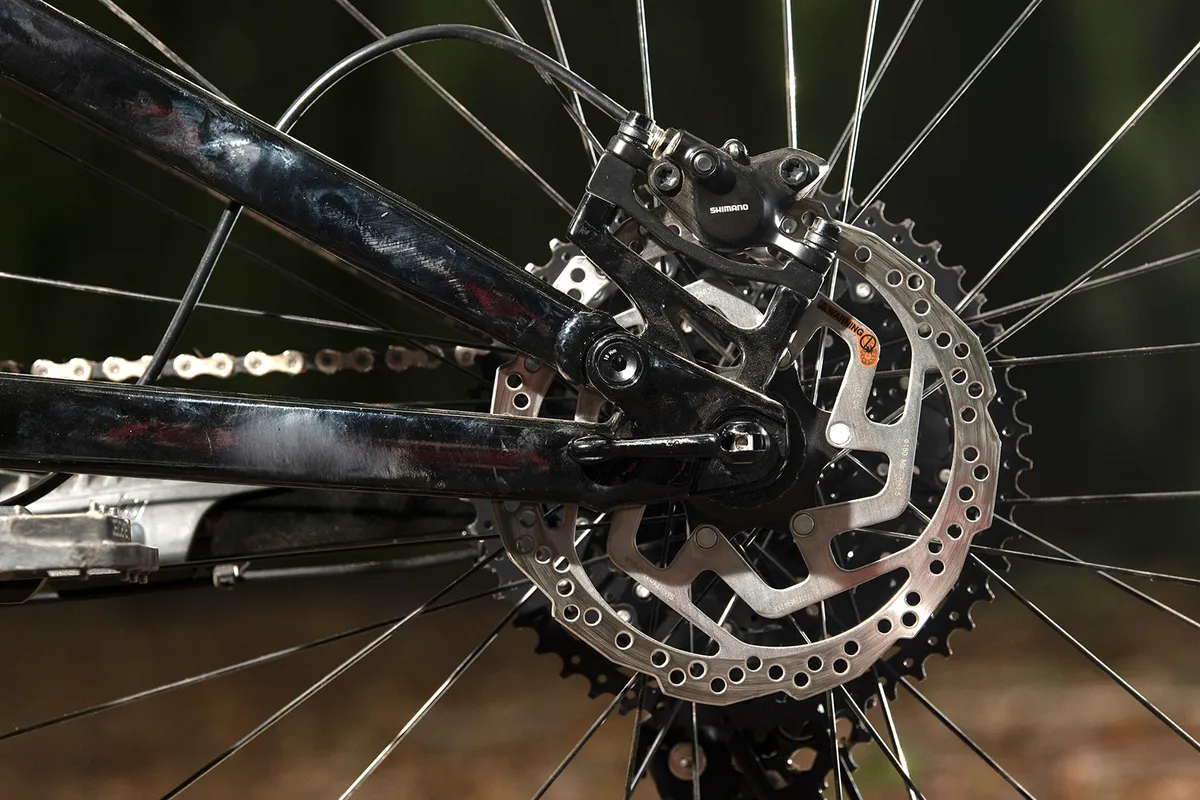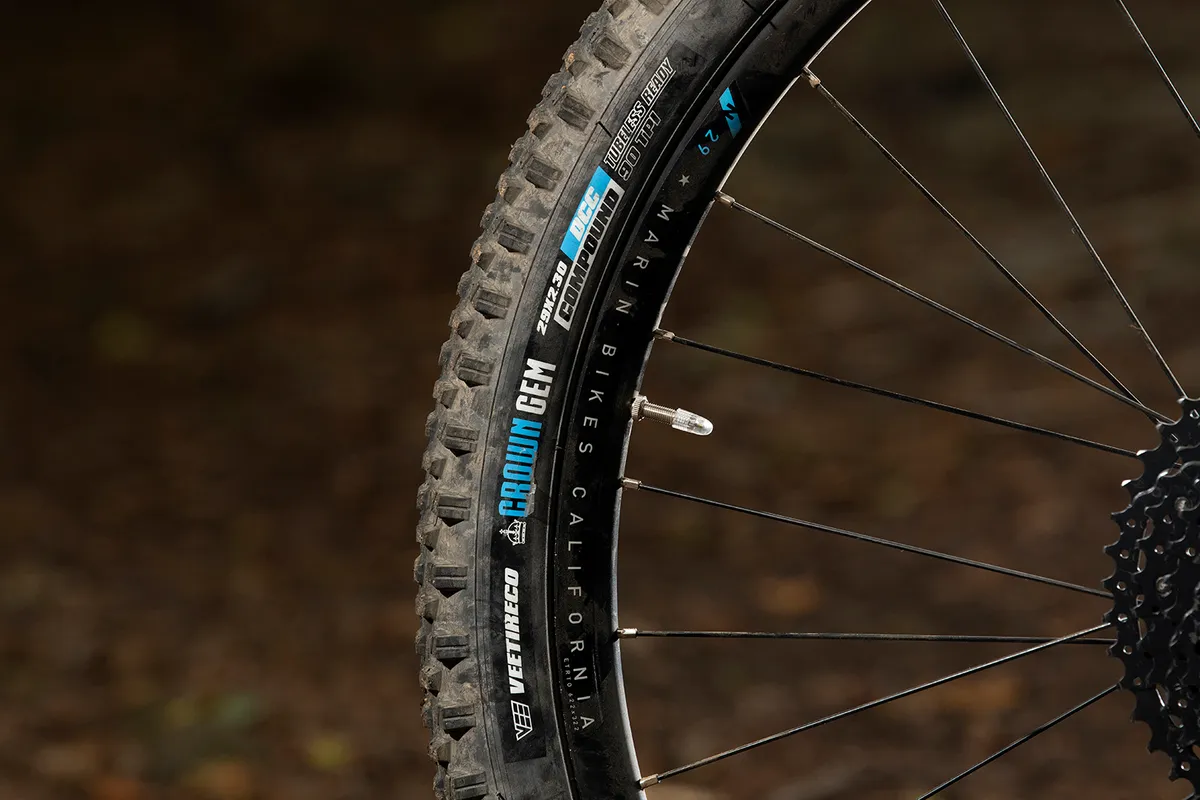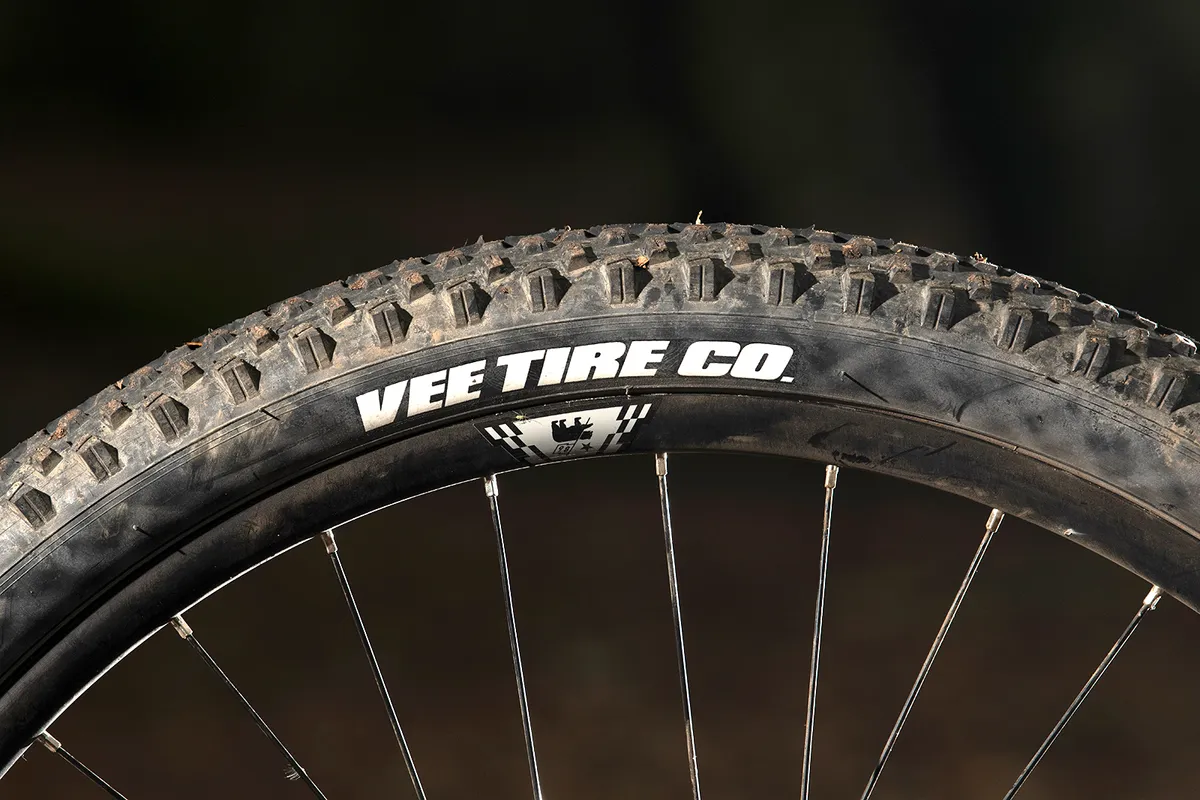Despite the Rift Zone 29 sitting at the more trail-focused end of Marin’s full-sus range, its geometry hints that the chassis is capable of faster and more gravity-orientated riding. This model has plenty of upgrade potential, too.
Marin Rift Zone 29 1 frame, suspension and geometry details
Built from Marin’s Series 3 hydroformed 6061 alloy, the frame boasts a distinctive curved down tube, shared with the rest of Marin’s range.
The Series 3 frames in Marin’s range also get internally routed cables – although they forgo internal cable guides of the carbon versions – and Boost 148x12mm axle spacing. However, this Rift Zone has the Boost 141 system, where internal spacers on either side of the dropouts permit the use of the 141 hub. Marin states these can be removed to upgrade to Boost 148.
Along with the internally routed cables, there’s in-built chain slap protection and water bottle mounts. It uses a 73mm threaded bottom bracket, a tapered headset, and has ISCG05 chain guide mounts.
The suspension uses a four-bar, single-pivot design, dubbed MultiTrac by Marin.
This has 125mm of travel and has been tuned to be progressive so the initial part of its travel is supple, while it ramps up towards the end for bottom-out resistance. Marin also says it has a sturdy pedalling platform, ideal for a 125mm travel trail bike.
The Rift Zone 29’s geometry sits at the more progressive end of the spectrum when compared to the best trail bikes we've ridden. I tested the size large, which has a long 480mm reach, a relatively slack 65.5-degree head angle and a suitably steep 76-degree seat tube angle.
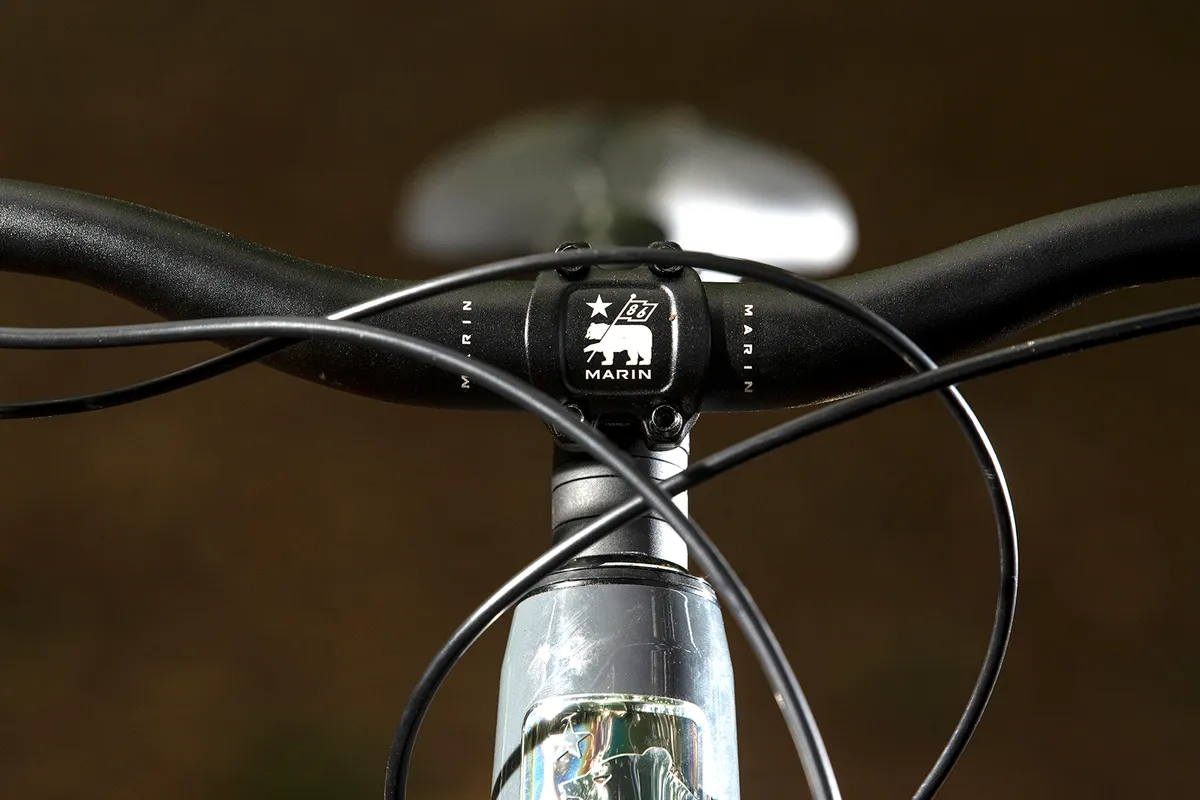
| | S | M | L | XL |
|---|---|---|---|---|
| Seat angle (degrees) | 76 | 76 | 76 | 76 |
| Head angle (degrees) | 65.5 | 65.5 | 65.5 | 65.5 |
| Chainstay (mm) | 425 | 425 | 425 | 425 |
| Seat tube (mm) | 390 | 400 | 425 | 430 |
| Top tube (mm) | 580.24 | 606.36 | 632.51 | 658.6 |
| Head tube (mm) | 100 | 105 | 110 | 115 |
| Fork offset (mm) | 44 | 44 | 44 | 44 |
| Bottom bracket drop (mm) | 34 | 34 | 34 | 34 |
| Bottom bracket height (mm) | 344 | 344 | 344 | 344 |
| Wheelbase (mm) | 1158.92 | 1186 | 1213 | 1240.1 |
| Standover (mm) | 691.84 | 697.1 | 717.83 | 721.97 |
| Stack (mm) | 602.6 | 607.15 | 611.7 | 616.25 |
| Reach (mm) | 430 | 455 | 480 | 505 |
| Crank length (mm) | 170 | 175 | 175 | 175 |
| Stem length (mm) | 35 | 35 | 35 | 35 |
| Handlebar width (mm) | 780 | 780 | 780 | 780 |
The chainstays are a short 425mm, while the bottom bracket (BB) is a reasonable 344mm off the ground. Combined, these figures point the Marin towards having a descent- and speed-focused bias, leaving its owner with the potential to upgrade to unlock increased gravity-fed performance.
Marin Rift Zone 29 1 specifications
As one of the cheaper full-sus bikes on the market, the Marin’s spec is functional, with a lot of own-brand kit.
The lack of a dropper post has the biggest effect on its ride; the rest of the parts increase its weight rather than decrease performance.
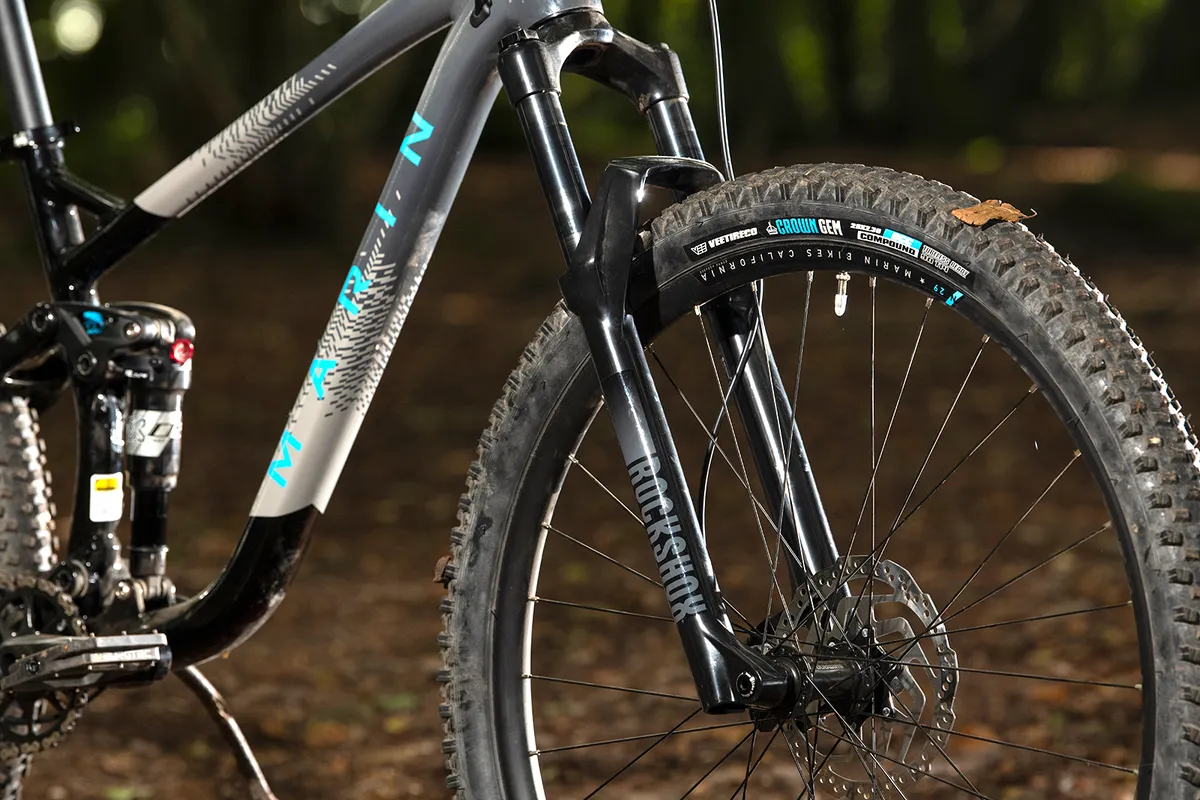
It's fitted with a 32mm stanchion RockShox Recon Silver RL fork with 130mm of travel, with a lock-out/compression adjustment lever and low-speed rebound adjustment. It does have an air spring, however, which makes it easy to tune for rider weight or style. The 125mm of rear travel is damped by X-Fusion’s O2 Pro R shock that’s been custom-tuned for Marin.
Marin Rift Zone 29 1 details
- Skinny legs: The 32mm stanchions (upper legs) of the Recon fork mean it’s flexier and has less accurate steering than larger-stanchioned equivalents such as RockShox’s 35
- Fun figures: Its geometry makes the Rift Zone a capable and unflinching bike to ride, and seriously fun to attack steeper and gnarlier trails on
- Mix and match: Made up of parts from Shimano, SunRace, KMC and Marin, the 11-speed drivetrain balances performance, price and durability
The 11-speed drivetrain is headed up by Shimano’s Deore rear derailleur and shifter, and matched with a SunRace 11-51t cassette and KMC X-11 chain. It’s fitted with Marin own-brand cranks with a 32t chainring that uses an external bottom bracket. There are Shimano BR-MT200 brakes and Shimano hubs.
Elsewhere, most of the kit is Marin-branded, including the bar, stem, seatpost, grips and rims. Those rims are wrapped in Vee Tire’s Crown Gem 29x2.35in rubbers, which are tubeless-ready.
Marin Rift Zone 29 1 ride impressions
The Rift Zone 29 has an upright seated position, more akin to an enduro bike than an XC race rig, so it feels like there’s less weight through your hands and more through your sit bones when ascending.
Fortunately, the Marin saddle’s flat shape is comfy.
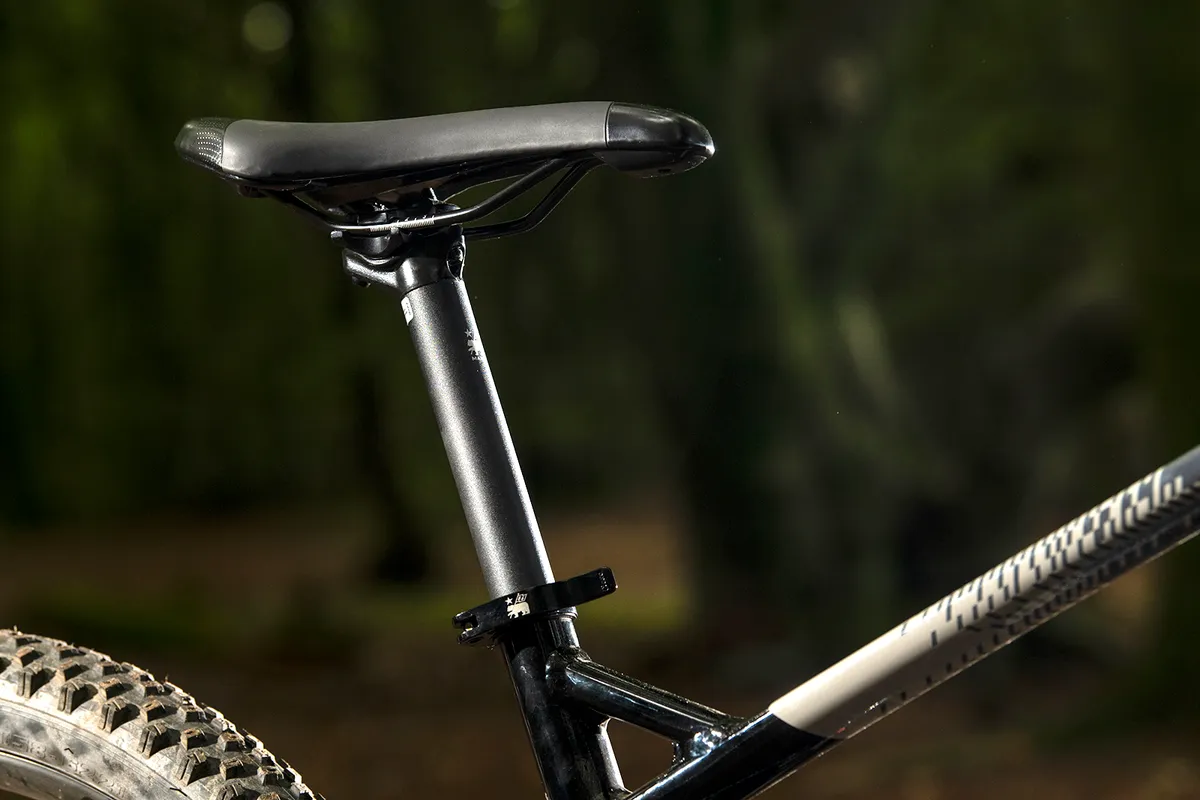
This comfortable and more upright position was created in part by the quite short top tube figure, but was mostly down to the steeper seat tube angle bringing my weight further forward over the bottom bracket and the short 35mm stem closing the bars towards us.
Because the seat angle positioned my hips further over the bottom bracket, not only was pedalling more comfortable compared to bikes where I was more over the back, it also helped reduce front-wheel lift and lightness on the very steep climbs.
Although the front wheel did begin to feel light when gradients were so steep that first gear was a grind, it remained remarkably controlled and comfortable with the need to shift my weight right to the front end of the saddle.
This position may not suit riders looking to race up trail-centre or singletrack climbs, but is comfier than a bike with a slacker seat tube and longer top tube and stem.
Adding to the comfortable feel of the bike is the super-supple fork that absorbed the smallest trail-centre chatter with confidence. The rear end isn’t quite as well matched in terms of small-bump compliance, and it didn’t tend to flutter as much as I was hoping, whether I was on the gas or not.
The upside of this is that it doesn’t bomb through its travel when ridden over mid-sized holes unsympathetically. Instead, it provides plenty of support thanks to a gradual ramp-up.
While it isn’t the most supple suspension, there’s still a bit of pedal bob when pedalling seated at high cadences and, because the shock doesn’t have a ‘climb’ switch, it wasn’t possible to stop this without over-inflating the spring.
Its geometry created a stable riding position – thanks to the distance and relationship between my hands and feet – that made it possible to attack the trails, and it truly came alive when speeds increased.
Its poise over rough terrain is one of its best assets, and it didn’t seesaw as its wheels moved in and out of holes. This inspired confidence and meant I could ignite the afterburners regularly.
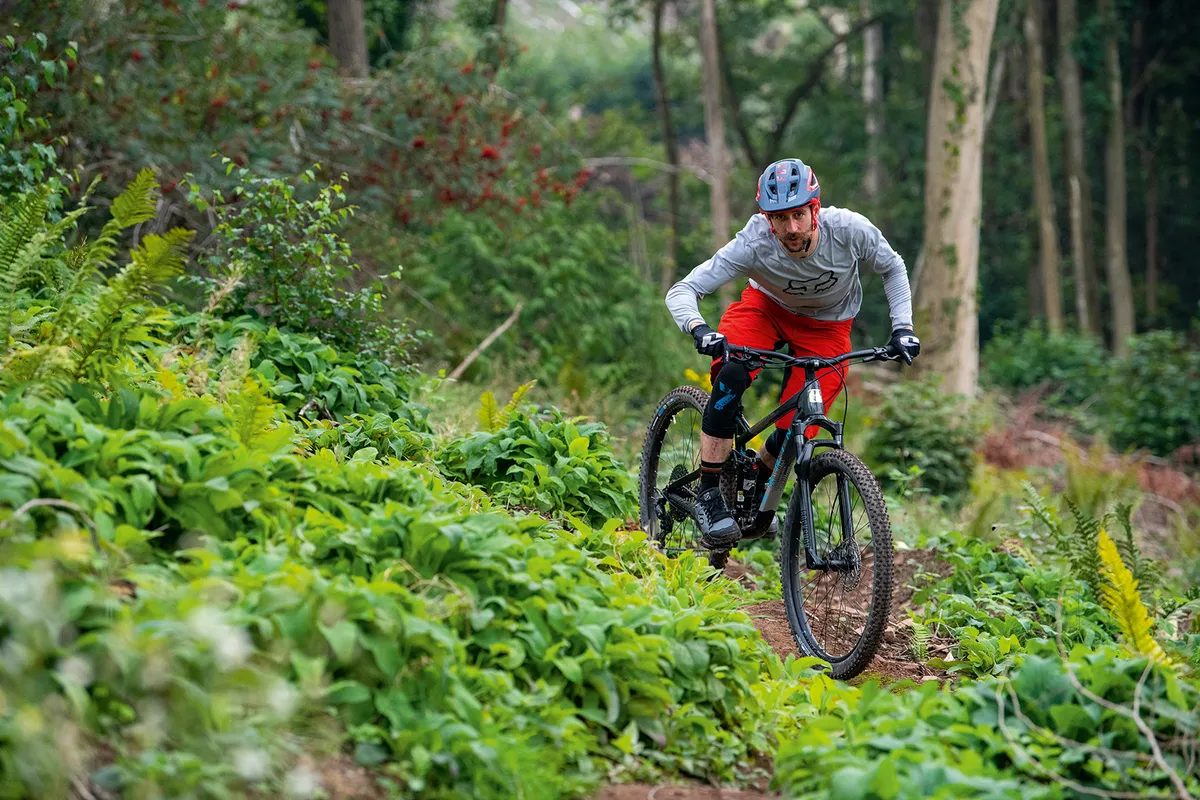
Descending does reveal some component shortfalls, though, with the 32mm-stanchion RockShox Recon being the weakest link.
On gnarlier trails – which the frame is more than capable of tackling – the fork feels noodly, with the flex creating steering vagueness.
Its basic damping can also be overwhelmed and begin to spike in rough, high-speed terrain.
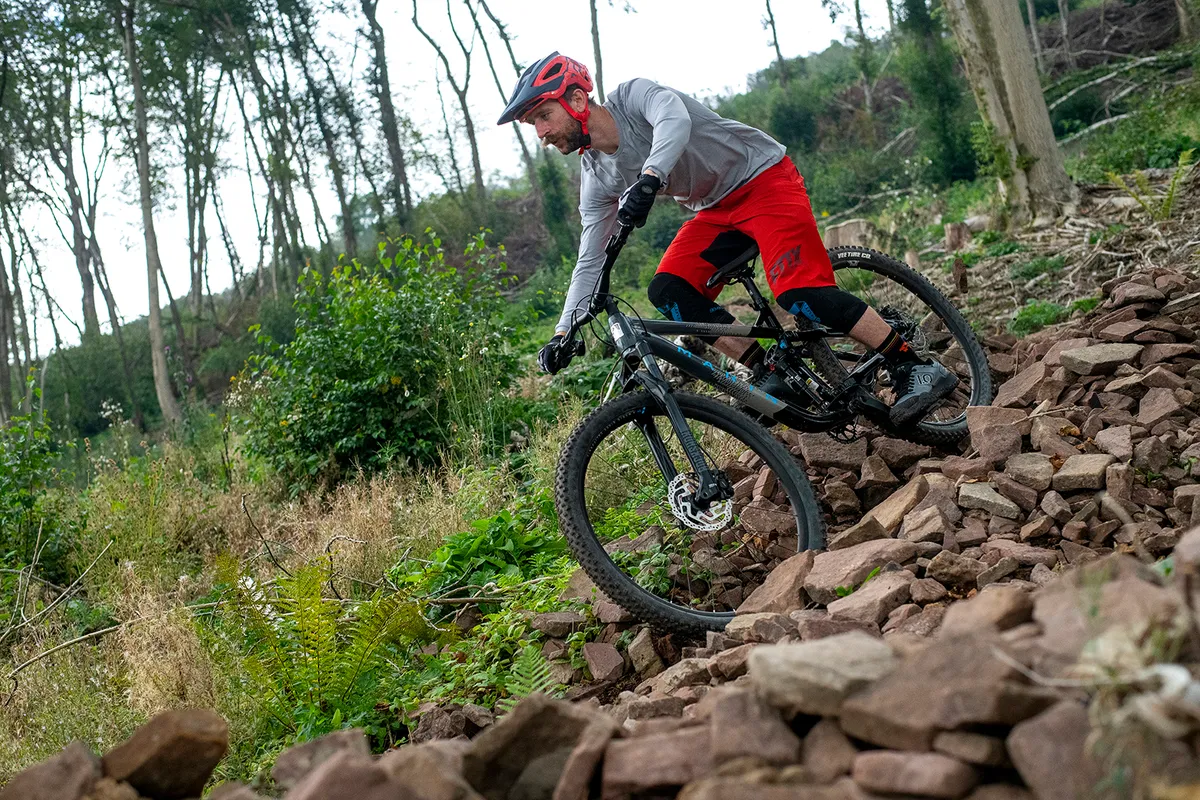
One solution is to increase air pressure way beyond RockShox’s recommendations – I ended up at 115psi.
The fork’s limits were exaggerated by the MultiTrac suspension’s competence. Although, like on the climbs, it wasn’t massively active on the small bumps, it had plenty of mid-stroke support that makes pushing through turns and compressions to generate speed addictive.
Vee Tire tyres mostly have a good reputation, but unfortunately the Crown Gems fitted would – in my opinion – need instantly upgrading. In any condition other than bone dry, they lack grip and control, and the very thin casing makes them easy to puncture. The hard compound did make them fast-rolling, though. Factoring in the cost for a tyre upgrade is essential.
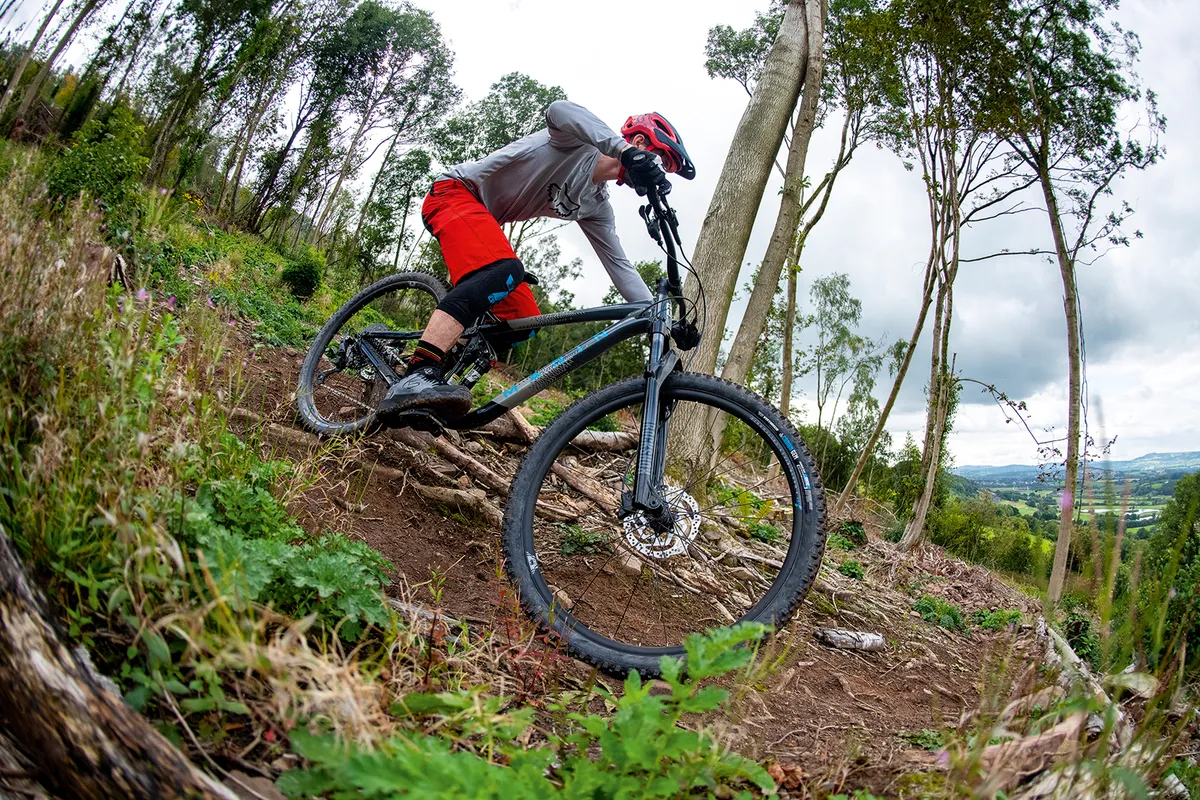
The lack of a dropper post interrupts flow, too, so I’d add one as a priority – you can get one for not much over £100, and we have a guide to the best dropper posts here. If you do decide to upgrade to a dropper, make sure the post you’re looking to purchase can be inserted deep enough into the frame (I measured the frame to have 202mm of insertion depth) for the travel it has.
These niggles aside, there’s no denying how capable and fun the Rift Zone is to ride, and how upgradeable its frame is. Its geometry and suspension give it a real descending bias, and for that reason I loved it, just keep some money aside to change out the tyres and add a dropper.
How we tested
We put three great-value full-sus trail bikes to the test to find out which one is most deserving of your cash.
Each bike was tested on the varied trails and tracks of Scotland’s Tweed Valley, ranging from trail centre loops at Glentress, and bridleway bashing on the Southern Upland Way, through to the more extreme descents in Innerleithen in a range of weather conditions.
Also on test
Product
| Brand | marin |
| Price | 2499.00 AUD,1899.00 EUR,1655.00 GBP,1899.00 USD |
| Weight | 15.3000, KILOGRAM (L) - without pedals |
Features
| Fork | RockShox Recon Silver RL, 130mm (5.1in) travel |
| br_stem | Marin, 35mm |
| br_chain | KMC X-11 |
| br_frame | ‘Series 3’ 6061 aluminium alloy, 125mm (4.9in) travel |
| Tyres | Vee Crown Gem, Dual Control, Tubeless Ready 29x2.35in |
| br_brakes | Shimano MT200, 180mm rotors |
| br_cranks | Marin, 32t |
| br_saddle | Marin Speed Concept |
| br_wheels | Marin Double-Wall rims on Shimano hubs |
| br_headset | FSA |
| br_shifter | Shimano Deore |
| br_cassette | SunRace, 11-51t |
| br_seatpost | Marin Alloy |
| br_gripsTape | Marin MTN |
| br_handlebar | Marin, 780mm |
| br_rearShock | X-Fusion 02 Pro R |
| br_bottomBracket | External |
| br_availableSizes | S, M, L, XL |
| br_rearDerailleur | Shimano Deore (1x11) |
